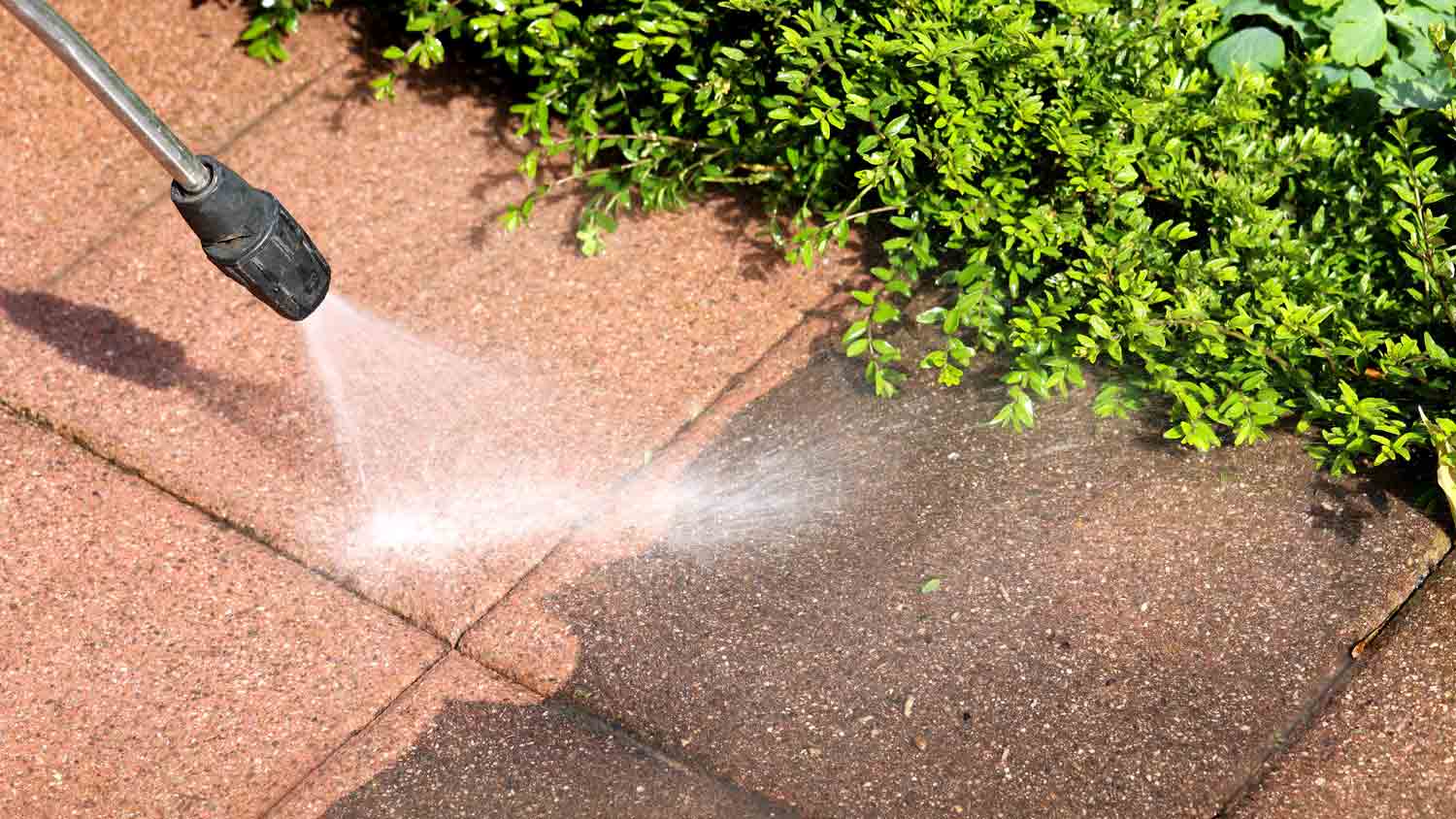13 Causes of a Pressure Washer Not Building Pressure and What to Do Next
Wash away your worries


Check for a clogged nozzle or inlet filter and clean them if they’re dirty.
Move your adjustable nozzle to a more powerful setting.
Look for knots in your hoses and leaks in your connections.
Test the water pressure at your hose bib.
Replacing a pump is often as expensive as buying a new pressure washer.
It’s Saturday morning, and you’re ready to clean the patio, but your pressure washer is not building pressure. Luckily, problems with pressure washers are often simple issues, such as a clogged nozzle or kinked hose line. Here are the top 13 reasons your pressure washer might not be building pressure and how to fix the issues so that you can get back to cleaning in no time.
1. Clog in the Nozzle
Debris and buildup can accumulate at the tip of your nozzle and block water flow. Check your nozzle for debris and clogs, and remove any items with needle-nose pliers. Then, flush the nozzle by turning on your machine.
2. Variable Nozzle Is in “Low” Position
Some nozzles are adjustable and affect the pressure level. Look at your nozzle’s labels and twist or press the tip to a higher pressure mode. To increase pressure, concentrate the stream, and for lower pressure, widen the stream.
3. Worn-Out Nozzle
A deteriorated, rusted, or broken nozzle can cause a lack of good water pressure in your pressure washer. Replace a broken or worn-out nozzle and try your pressure washer again. Make sure you check the size of the nozzle opening and match it to your machine.
4. Dirty or Stuck Unloader Valve
Adjust your unloader to increase the pressure by turning it clockwise. Check to see if the water pressure improves. If not, your unloader valve may be stuck or dirty. Remove it (it’s located near the pump head) with a screwdriver. The valve should move freely, but if it doesn’t, clean the valve with a damp cloth or cleaning lubricant. Make sure the port hole is clean, too. Use a paperclip or other small device to remove any grime buildup in the hole.
5. Defective O-Ring
You may have a bent or broken O-ring inside the unloader valve that’s blocking water and creating a weak stream. Remove the unloader valve and look at the O-ring. Clean it of any debris. If the O-ring is damaged, you’ll need to replace it.
6. Low-Pressure Nozzle

Switch to a nozzle with a lower-degree spray angle or turbo nozzle to achieve more pressure at the tip. A 15-degree (yellow) nozzle, for example, will offer more pressure than a 25-degree (green) nozzle.
"If you don't think your pressure washer is strong enough, consider hiring a pro. Professional machines provide stronger pressure without using a smaller tip, allowing them to maintain surfaces without damaging them."
— Dylan Harris, Director of Operations at Window Hero, Charlotte, North Carolina
7. Knots and Leaks in the Hoses
Knots can cause fluctuations and reduced water pressure, so look for kinks in the supply hose and high-pressure hose. Release any kinks and try your pressure washer again. Check for leaks in the hoses, too. You’ll need to repair or replace any damaged hoses.
8. Leaks at Connections
Watch for leaking water at every connection of your pressure washer. Tighten all fittings to ensure that the pressure is consistent. Double-check that your nozzle tip is on tightly.
9. Insufficient Pressure at Hose Bib
Your water supply from the hose bib could be the issue, especially if you notice your water pulsing from high to low pressure. Test the water pressure at your hose bib to determine the issue and fix it. Or, contact a local plumber to diagnose the issue for you.
10. Clogged Inlet Hose Filter
Debris buildup can impact water flow, so check the inlet filter at the hose connection for clogs. Rinse out the filter under tap water or remove the debris by hand. When you put the inlet filter back in, ensure it creates a tight seal.
11. Relief Valve Issue
The relief valve can get stuck or clogged or have a worn seal, preventing your machine from reaching full pressure. Look for leaks and dirt around the valve. Clean and adjust the valve as needed, and ensure the seal is tight.
12. Broken or Out-of-Place Belt

The internal belt connects the engine and the pump using a pulley system. If the belt slips out of place, pressure decreases. Open up your pressure washer to access the belt. Adjust, tighten, or replace the belt.
13. Pump Issue
If nothing else is the cure for your pressure washer not building pressure, you may have a faulty or worn-out pump. Pump issues happen, especially if you store the pressure washer without draining the water or using an anti-freeze or pump saver before winter.
To check for a pump malfunction:
Turn on your pressure washer and read the PSI on the gauge.
If the pressure peaks and then drops, you likely have an internal pump problem.
Pump problems can be difficult to fix and diagnose, but a power washing company near you can investigate or look inside your pump. Replacing a pressure washer pump is nearly as expensive as buying a new pressure washer. A mid-level pressure washer costs $100 to $1,000. Basic pump repair costs $150 to $300, but it could go up to $1,000 depending on the size and type of pump.















